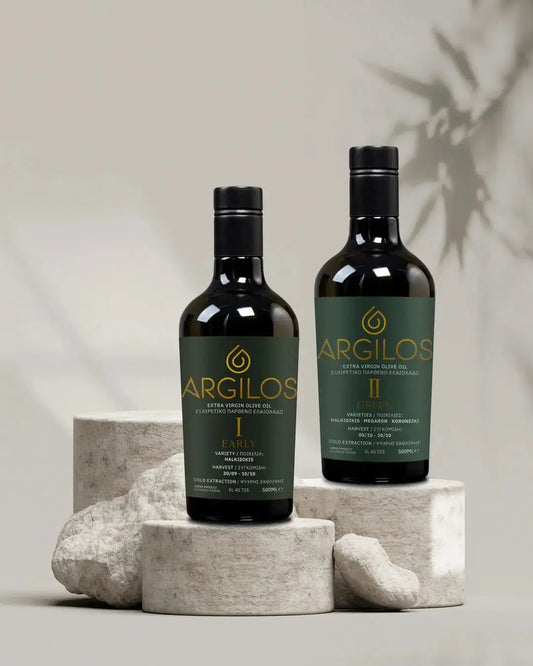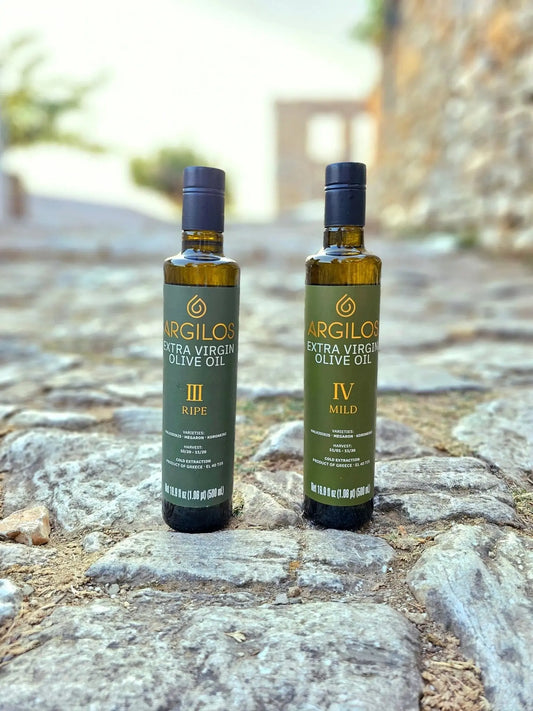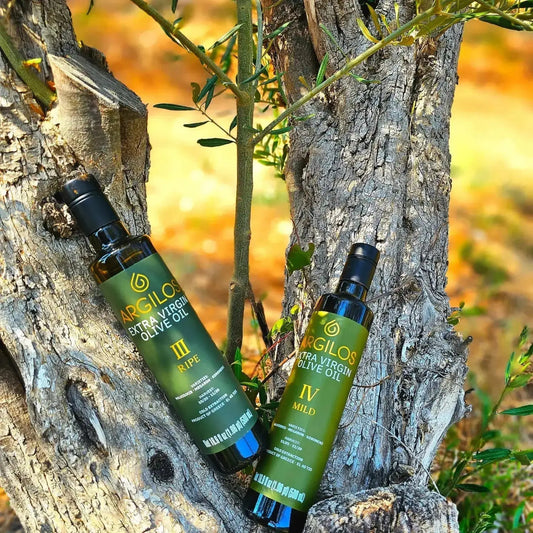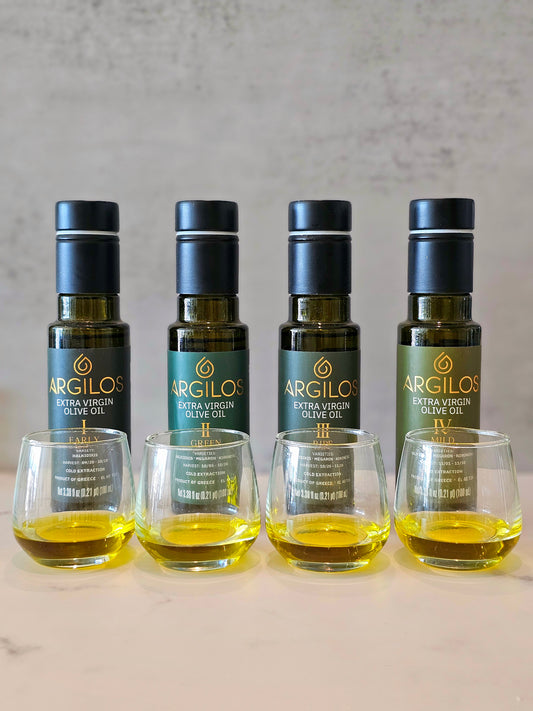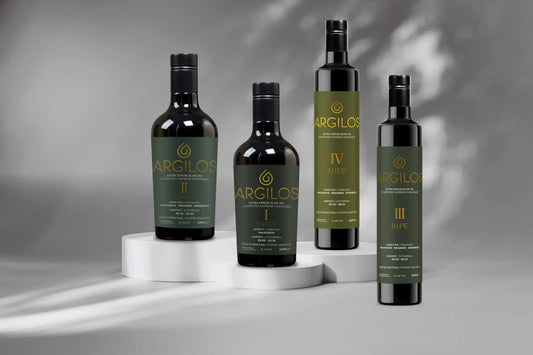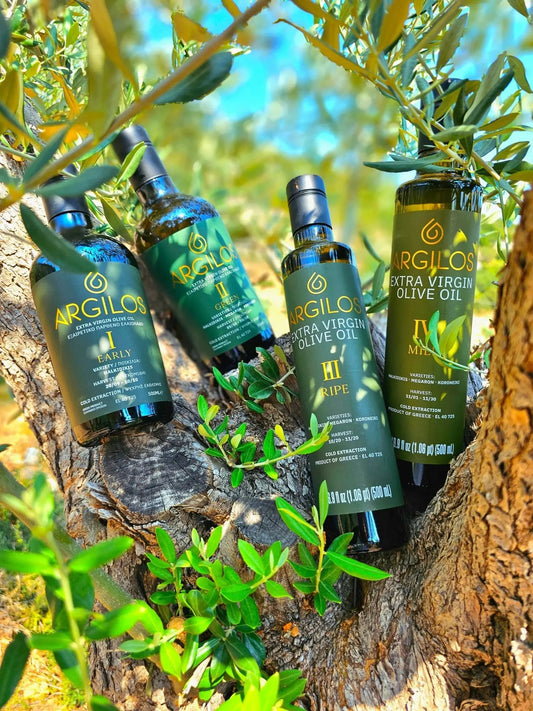Greek Olive Oil vs Italian Olive Oil: Which One Is Truly the Best?
Share
Among the treasures of the Mediterranean, few rival the prestige and passion surrounding olive oil. Greek olive oil vs Italian olive oil stand as the world’s foremost producers, each claiming centuries of tradition, superior flavor, and healthful purity. Yet, while both are exceptional, their differences reveal unique stories of land, culture, and craftsmanship. This article explores those nuances to help you discover which olive oil truly deserves the crown—and why many believe authentic Greek olive oil holds an unmatched edge.
Definition and Overview
What Is Greek Olive Oil?
Greek olive oil, particularly Extra Virgin Olive Oil (EVOO), embodies purity, simplicity, and heritage. Cultivated mainly in regions such as Crete, Kalamata, and the Peloponnese, it is celebrated for its deep green color, peppery finish, and grassy aroma.
The Koroneiki olive—small, hardy, and nutrient-dense—is the heart of Greek production. Cold-pressed soon after harvest, it yields oil rich in antioxidants and flavor intensity, creating a taste that feels both earthy and alive.
What Is Italian Olive Oil?
Italy’s olive oil story is one of artistry and regional diversity. From Tuscany’s gentle hills to Puglia’s sun-drenched groves, Italian producers craft blends using Frantoio, Leccino, and Moraiolo varieties. The result is a smooth, fruity, and buttery oil that reflects the country’s refined culinary sensibilities. Italian EVOO is loved worldwide for its balance and elegance, offering a subtle complement to a variety of dishes without overwhelming the palate.
Why These Two Are the World’s Most Famous Olive Oils
Both Greece and Italy have turned olive oil into cultural symbols that extend beyond cuisine. Protected by EU designations such as PDO (Protected Designation of Origin) and PGI (Protected Geographical Indication), their oils represent integrity and regional authenticity. For Mediterranean communities, olive oil is more than nourishment—it is identity, heritage, and the essence of well-being.
Origins and Terroir Differences
The Mediterranean basin provides ideal conditions for olive cultivation, yet Greece and Italy express that climate differently.
Greece’s arid soil, intense sunlight, and coastal winds yield olives concentrated in antioxidants and flavor. Italy, by contrast, offers a patchwork of microclimates—ranging from Tuscany’s cooler hills to Sicily’s volcanic soil—producing oils with gentler fruitiness and layered aromas. Terroir, as in fine wine, shapes every drop.
Olive Varieties Grown in Greece vs. Italy
Greek olive oil largely depends on the Koroneiki olive, revered for its rich phenolic content and resistance to drought. Italian producers enjoy a greater variety, including Frantoio, Leccino, and Ogliarola, each bringing distinct notes—from almond sweetness to fresh-cut grass. Greece’s reliance on a single star variety ensures consistency, while Italy’s diversity yields complexity and regional expression.
Cultural and Historical Importance of Olive Oil in Each Country
In Greek mythology, the olive tree was a divine gift from Athena, symbolizing wisdom and peace. Olive oil was used in religious rituals, medicine, and daily life—a sacred element of Greek identity. Italy, too, elevated olive oil during the Renaissance, embedding it in art, trade, and gastronomy.
Today, both nations continue to celebrate olive oil as a way of life, though Greece’s smaller-scale, family-owned estates—such as those supplying Nostos Goods—preserve a rare authenticity rooted in the land itself.

Production Methods and Quality Standards
Greek olive oil production favors simplicity and precision. Farmers harvest olives by hand and cold-press them at temperatures below 27°C to retain nutrients and flavor. The process results in pure, small-batch oils with low acidity and a vibrant taste profile.
Italy, known for its blending craftsmanship, often combines oils from multiple regions to create consistent, market-ready products. While this blending ensures recognizable flavor profiles, it can sometimes dilute the individuality and traceability found in Greek single-origin oils.
PDO, PGI, and EU Certification Differences
Both Greece and Italy uphold EU regulations that govern olive oil purity, labeling, and chemical standards. Greece has over 30 PDO-protected oils, emphasizing regional authenticity, while Italy leads numerically with more than 40.
However, many Greek producers maintain strict single-origin practices, ensuring each bottle can be traced to a specific grove or region—an increasingly valued trait among modern consumers.
Chemical Composition and Acidity Levels Comparison
When comparing Greek olive oil vs Italian olive oil, Greek EVOO typically features lower acidity (0.2%–0.5%) and higher polyphenol content than its Italian counterparts. These compounds are responsible for the peppery sensation on the tongue and provide strong antioxidant and anti-inflammatory effects.
Italian oils, while elegant, tend to have slightly higher acidity and less polyphenolic concentration due to their blending processes.

Taste, Aroma, and Culinary Applications
Greek olive oil captivates with bold intensity—grassy, peppery, and slightly bitter, often leaving a pleasant burn in the throat that signals potency. Italian olive oil, on the other hand, is silky and balanced, with delicate notes of apple, almond, and ripe fruit. Each reflects its homeland: Greece’s rugged natural spirit and Italy’s refined culinary artistry.
Best Uses in Cooking, Salads, and Mediterranean Dishes
Greek olive oil shines when used raw, drizzled over fresh salads, grilled vegetables, or seafood. Its robust character transforms simple ingredients into vibrant, nutrient-rich dishes. Italian EVOO, with its smoother texture, excels in sauces, pasta, and slow-cooked recipes where gentle fruitiness enhances but doesn’t dominate. Both oils elevate Mediterranean cooking, yet their ideal uses depend on the desired intensity.
Sensory Experience: Color, Texture, and Mouthfeel
Visually, Greek olive oil often presents a deep emerald hue with golden undertones, a testament to its freshness and purity. Its texture feels dense and luxurious, coating the mouth with grassy richness. Italian oils, ranging from pale gold to yellow-green, tend to be lighter and silkier. The contrast between the two mirrors their cultural philosophies—Greece’s strength and authenticity versus Italy’s harmony and finesse.

Health Benefits Comparison
Greek olive oil consistently outperforms in antioxidant density, thanks to its Koroneiki olives and immediate cold-pressing methods. Polyphenols, the natural plant compounds responsible for olive oil’s health benefits, help reduce inflammation, protect cells, and support longevity—making Greek EVOO not just a culinary delight but a wellness powerhouse.
Nutritional Composition Differences
Both Greek and Italian oils are high in monounsaturated fats and oleic acid, which contribute to cardiovascular and metabolic health. Yet the higher phenolic diversity in Greek EVOO enhances its protective effects, supporting cholesterol balance and immune function. This difference reinforces the Greek diet’s reputation as the world’s healthiest traditional eating pattern.
Heart Health and Anti-Inflammatory Properties
Long-term studies have linked daily consumption of high-quality olive oil, particularly Greek EVOO, to improved heart health and lower inflammation markers. Its bioactive compounds reduce LDL oxidation, improve arterial elasticity, and even contribute to brain health. This makes olive oil not just a kitchen essential but a cornerstone of holistic wellness.
Price, Availability, and Export Market
Italian olive oil’s global fame owes much to its powerful branding and culinary prestige. The “Made in Italy” label evokes luxury and tradition, helping it command prime shelf space worldwide. However, not all “Italian” oils are purely Italian—many blends include imported olives reprocessed under Italian supervision.
Despite superior purity, Greek olive oil remains less visible internationally. Large portions are exported in bulk to Italy for blending and rebranding. Connoisseurs, however, increasingly recognize Greek EVOO as an “insider’s secret”—a product of integrity and craftsmanship that prioritizes quality over mass production.
As consumers grow more discerning, transparency and traceability have become defining factors. Brands like Nostos Goods respond to this demand by working directly with Greek farmers, ensuring small-batch production and clear provenance. This approach restores trust and celebrates the true spirit of the Mediterranean.
Greek Olive Oil Vs Italian Olive Oil - Which One Should You Choose?
For everyday cooking, Italian EVOO offers accessibility and a gentle flavor that complements a range of cuisines. For those seeking depth, nutrition, and authenticity, Greek EVOO stands out as the superior choice. Its robust character enhances both taste and well-being.
Ultimately, both oils belong in a balanced kitchen—but Greek olive oil embodies the soulful connection between tradition, purity, and nature’s vitality.
How to Identify Authentic Greek Olive Oil
Recognizing genuine Greek EVOO begins with the label. Look for PDO or PGI certifications, harvest dates, and acidity levels below 0.8%. Authentic Greek oil often indicates a specific region or even an estate name, showing traceability from grove to bottle. Fresh oil should smell of green herbs and leave a peppery note on the palate—a sign of abundant antioxidants and natural vitality.
Nostos Goods exemplifies this authenticity by sourcing directly from Greek olive groves, cold-pressing within hours of harvest, and ensuring every bottle reflects the sun, soil, and heritage of Greece.
Final Comparison Table: Greek Olive Oil Vs Italian Olive Oil
|
Attribute |
Greek Olive Oil |
Italian Olive Oil |
|
Origin |
Greece (Peloponnese, Crete, Kalamata) |
Italy (Tuscany, Puglia, Sicily) |
|
Taste |
Bold, peppery, grassy |
Fruity, mild, buttery |
|
Polyphenol Content |
High |
Moderate |
|
Production |
Cold-pressed, single origin |
Often blended, large-scale |
|
Best Use |
Raw dishes, wellness |
Cooking, salad dressings |
|
Authenticity |
Traceable, family-grown |
Frequently mixed sources |
In Conclusion
Olive oil connects generations, blending health, heritage, and hospitality in every drop. Between Greek olive oil vs Italian olive oil, both oils tell magnificent stories, but Greek olive oil remains the purest expression of Mediterranean life—vibrant, unblended, and alive with history.
Nostos Goods captures this legacy through genuine Greek sourcing and artisan production, offering a taste that carries centuries of craftsmanship from grove to table.
FAQs
Is Greek olive oil healthier than Italian olive oil?
Generally, yes. Greek EVOO contains more polyphenols and lower acidity, enhancing its antioxidant and anti-inflammatory properties.
Why is Italian olive oil more famous?
Italy’s global reputation stems from strong branding and export dominance rather than consistent purity across all products.
What makes Greek olive oil taste peppery?
The peppery sensation is caused by oleocanthal, a natural antioxidant abundant in fresh, high-quality Greek olive oil.
Can I use Greek olive oil for cooking?
Absolutely. While its flavor shines raw, it’s stable under heat and perfect for roasting, sautéing, and grilling.
Italian vs Greek olive oil - Which olive oil has more antioxidants?
Greek olive oil usually contains more antioxidants, thanks to its Koroneiki olives and rapid cold-pressing techniques.

